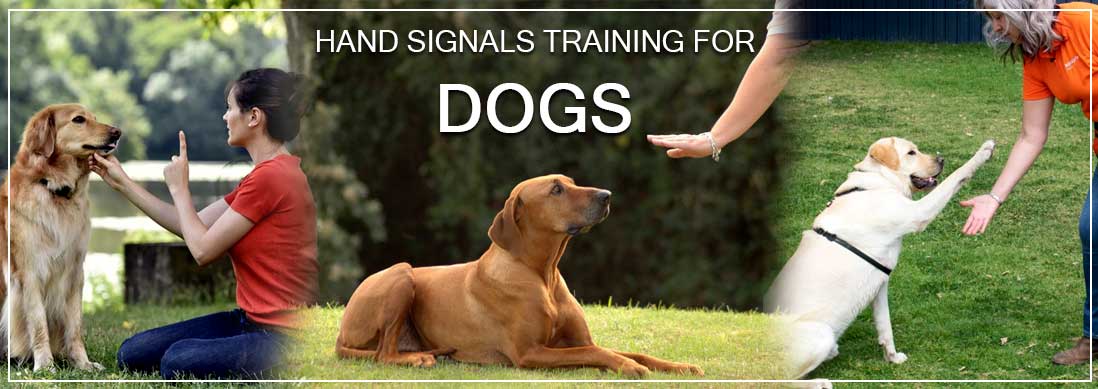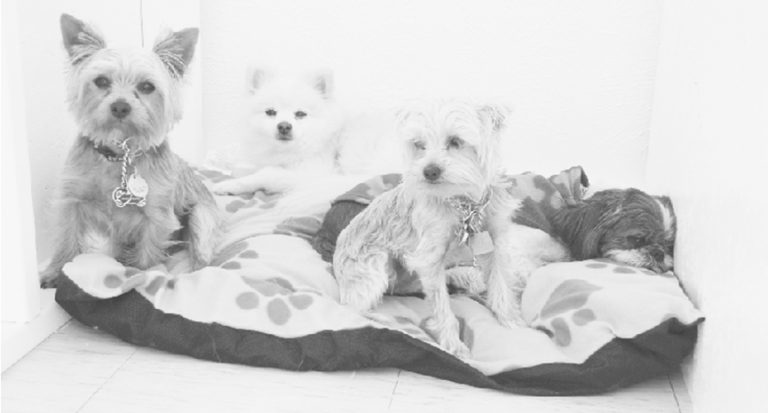Dogs are ultimately very well adept in interpreting non-verbal signals, and therefore do well, if not even better, when they are attending to hand gestures but why is that?
A good part of this may be attributed to the fact that canines do not use verbal communication, and therefore, must rely a lot on body language in order to communicate with their own species and humans.
Consequently, dogs have a certain aptitude for reading our body language and gestures. Ever seen how Rover is quick to read any of your slight body movements towards the refrigerator?
It is not unusual indeed for a dog to pay more attention to a hand gesture than a command such as a sit. If you make your dog sit by pointing your index finger as you say “sit”, chances are high that should you happen to only say “sit” one day without pointing, your dog may not respond because it has learned to rely more on your hand signal than anything else. In dog training, the hand gesture in such a circumstance would be referred as to being “more salient” than the verbal command.
Hand signals are also heavily used when training dogs from a distance, such as in directing a hunting dog to retrieve a downed bird, training a dog to compete in a utility obedience competition, or asking a herding dog to move the flock. Ok, these might not be daily occurrences but still, similar situations can occur.
Sometimes dog owners rely on non-verbal signals unknowingly, such as when tilting their head downwards upon asking “sit” or moving their body slightly backward upon asking a dog to “lay down”.
Some dog owners may wish to have a dog that attends to both verbal and non-verbal dog training commands. This may be advantageous in many ways. Should the dog be elderly and go deaf one day, it will be able to read sign language with no need to train new hand signals. Also, the use of dog training hand signals may be helpful should the dog voluntarily or involuntarily fail to obey a verbal command.
While many dog owners create their own dog hand signals from scratch, here are some standard.
Non-official Dog Hand Signals
Sit Hand Signal
Start with your dog standing in front of you. Keep your arm hanging alongside your body with a dog training treat between your thumb and palm.
Bring your forearm upwards, while bending your elbow with your palm facing up.
Move your hand slightly upward from your dog’s nose towards the head. As your dog follows the treat raising its head, its rear will lower in a sit. Praise and deliver the treat.Down Hand Signal
Start with your dog sitting in front of you.
Keep your arm extended in front of you with the palm of your hand facing down.
Keep a treat between your thumb and index finger.
Lower your arm while luring your dog with the treat until your dog’s elbows touch the floor and the dog is laying down. Immediately praise and deliver the treat.Stay Hand Signal
Start with your dog sitting or laying down. Keep your arm hanging alongside your body.
Bring your forearm upwards facing your dog’s head with your palm open just as a policeman giving a stop signal.Heel Hand Signal
During heel, your dog’s shoulder is aligned with your left knee.
Tap your left thigh with your left hand so to attract your dog’s attention to stay next to you.
Praise and reward with a treat once in position.Come Hand Signal
Start with your dog a few feet away from you.
Keep your arm hanging alongside your body.
Bring your forearm upwards with your palm facing up and bring it towards your right shoulder.
Praise your dog for coming towards you and reward with a treat once your dog catches up.
Hand signals will make your dog more attentive to your body language and will ultimately impress your family and friends. Best of all, hand signals are easy to teach and dogs respond to them promptly. Teach dog training hand signals to your dog and you will both greatly benefit from a deeper understanding and bond.





